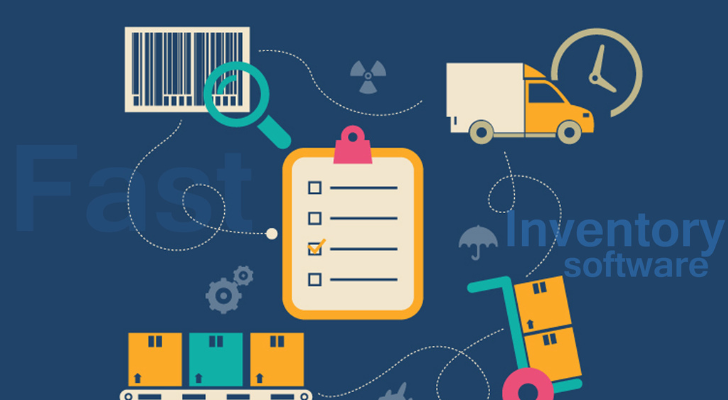Inventory Software

Inventory Software: Streamlining Management for Efficient Operations
Inventory management is a critical aspect of running a successful business, and the use of dedicated inventory software has become essential for organizations of all sizes. From tracking stock levels to managing orders and optimizing supply chains, inventory software offers a comprehensive solution to streamline operations. Let's delve into the key features, benefits, and considerations when using inventory software.
Key Features of Inventory Software:
-
Stock Tracking: Monitor and track real-time stock levels, allowing businesses to avoid overstocking or stockouts.
-
Order Management: Generate and manage purchase orders, sales orders, and customer invoices seamlessly within the software.
-
Barcode Scanning: Use barcode scanning technology to speed up the process of entering and updating inventory data accurately.
-
Multi-Location Support: For businesses with multiple warehouses or stores, inventory software often supports tracking across various locations.
-
Reporting and Analytics: Access detailed reports and analytics to gain insights into inventory turnover, sales trends, and other key performance indicators.
-
Supplier and Customer Management: Maintain a database of suppliers and customers, facilitating efficient communication and order processing.
-
Integration with E-commerce Platforms: Many inventory systems integrate with e-commerce platforms, automating the synchronization of online and offline inventory.
-
Forecasting: Use predictive analytics and historical data to forecast demand and plan inventory levels accordingly.
-
Alerts and Notifications: Set up alerts for low stock levels, expiring products, or other critical events to proactively manage inventory.
-
User Permissions: Control access to sensitive inventory data by assigning different levels of permissions to users within the organization.
Benefits of Inventory Software:
-
Efficiency and Time Savings: Automation of inventory-related tasks reduces manual effort and saves time, allowing employees to focus on more strategic activities.
-
Accuracy in Data: Minimize the risk of human errors in data entry with the use of barcode scanning and automated processes.
-
Cost Savings: Prevent overstocking or stockouts, avoid unnecessary holding costs, and optimize order quantities to save on operational expenses.
-
Improved Customer Satisfaction: Accurate and real-time inventory information ensures that customer orders can be fulfilled promptly, enhancing customer satisfaction.
-
Enhanced Visibility: Gain a clear view of your entire supply chain, helping you make informed decisions and adapt to changes in demand.
-
Regulatory Compliance: Ensure compliance with industry regulations and standards related to inventory management.
-
Scalability: Many inventory systems are scalable, accommodating the growth of the business without significant disruptions.
-
Better Financial Management: Accurate inventory data contributes to more precise financial reporting, helping organizations make informed financial decisions.
Considerations When Choosing Inventory Software:
-
Scalability: Ensure that the software can scale with the growth of your business and handle increasing data volumes.
-
Integration: Look for software that integrates seamlessly with other business systems, such as accounting software, e-commerce platforms, or ERP systems.
-
User-Friendly Interface: Choose software with an intuitive and user-friendly interface to facilitate easy adoption and use by employees.
-
Cost and Return on Investment (ROI): Evaluate the cost of the software against the expected return on investment. Consider both short-term and long-term benefits.
-
Customization: Assess the level of customization the software offers to tailor it to the specific needs and workflows of your business.
-
Support and Training: Ensure that the software vendor provides adequate support and training resources to assist with implementation and ongoing use.
-
Security Measures: Prioritize security features to protect sensitive inventory data from unauthorized access or cyber threats.
-
Mobile Accessibility: Consider whether the inventory software offers mobile accessibility, allowing users to manage inventory on the go.
🚀 Master Top Web & App Frameworks
Explore structured tutorials for AngularJS, React, Laravel, Flutter, PHP, SQL, and more.
📘 Introduction to AngularJS
Introduction to AngularJS overview
📘 Introduction to Laravel
Learn Introduction to Laravel in Laravel with real-world examples and step-by-step guide.
📘 Introduction to CodeIgniter
An introduction to Introduction to CodeIgniter in CodeIgniter with examples.
📘 Introduction to React
Quick overview and guide to Introduction to React in React JS.
📘 Introduction to Flutter
An easy-to-follow tutorial on Introduction to Flutter in Flutter mobile app development.
📘 Introduction to Kotlin
Learn Introduction to Kotlin in Kotlin programming with examples for Android or backend apps.
📘 Introduction to PHP
Understand Introduction to PHP in PHP with practical examples and clear syntax.
📘 Introduction to SQL
Understand Introduction to SQL in SQL for effective database querying and management.
📘 Introduction to Bootstrap 5
Understand Introduction to Bootstrap 5 in Bootstrap 5 for responsive web design using pre-built components.
📘 Introduction to HTML
Understand Introduction to HTML in HTML to create structured, semantic, and accessible web content.
📘 Introduction to CSS
Explore Introduction to CSS in CSS to enhance web design using styling properties and layout techniques.
📘 Introduction to JavaScript
Understand Introduction to JavaScript in JavaScript to build dynamic and interactive web experiences.
📘 Introduction to Node.js
Explore Introduction to Node.js in NodeJS for backend development using JavaScript and non-blocking architecture.
📘 Introduction to AJAX
Understand Introduction to AJAX in AJAX to update web pages without full reloads using asynchronous JavaScript and XML.
📘 Introduction to jQuery
Learn Introduction to jQuery in jQuery to write less and do more with simplified JavaScript operations and cross-brow...
📰 Latest Blog Posts
Insights, tutorials, and tech stories from our experts.
Transform Your Passion into a Web Development Career
Do you love tech? Let’s turn it into a profession with full stack development.
Not Just Coding – Career-Focused Full Stack Training
We don’t just teach code—we teach how to get jobs with it.
Learn, Code, Build, Get Hired – Full Stack Program
A step-by-step path to go from beginner to hired developer.
BCA/MCA/B.Tech? Start Building Real Websites Now!
Already pursuing IT education? Now build real websites with us!
Offline Full Stack Training in Dwarka & Uttam Nagar – Limited Seats!
Join our offline batch in Dwarka or Uttam Nagar and learn full stack development practically.
Struggling in Interviews? Build Skills That Get You Hired!
Facing rejections in job interviews? Build the right skills and project experience.


